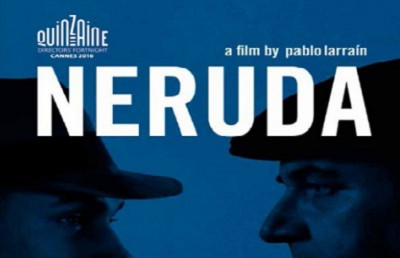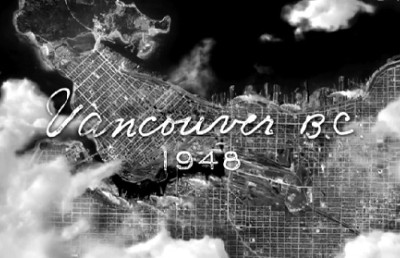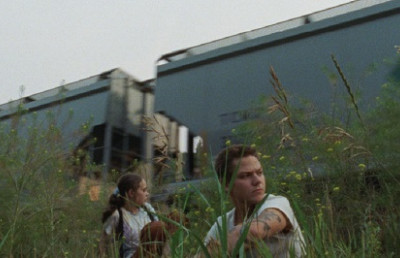‘Original Copy’: Inverting Platonism in Abbas Kiarostami’s Certified Copy
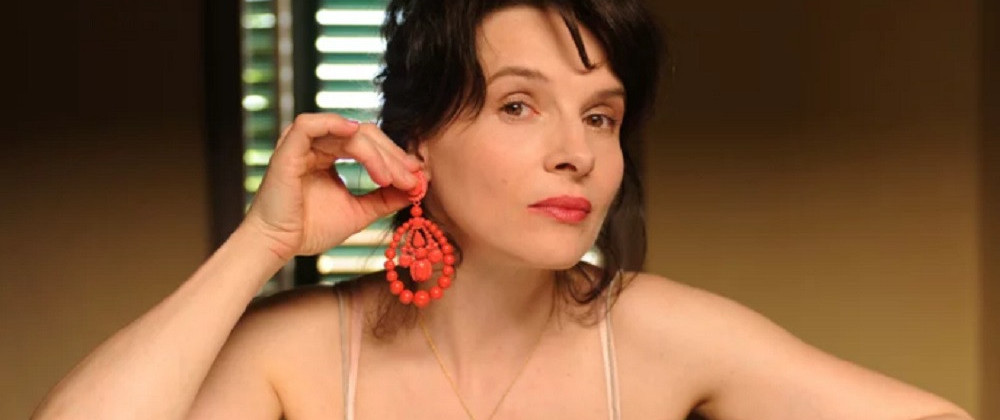
Certified Copy (Image source, Criterion)
In my view, whether documentary or fiction, it’s all one big lie we’re telling the viewer. The important thing is that the viewer realize that we string together this series of lies to reach a greater truth. They’re lies, not real, yet they’re somehow true.
Abbas Kiarostami, Truths and Dreams
For a director admired for capturing the social vistas of post-Shah Iran, Kiarostami’s Certified Copy (2010) may seem disappointingly cerebral, even sentimental, a Hollywood-style romantic story set in sunny Tuscany and revolving around a narrative enigma it stubbornly refuses to solve. A British writer, James Miller (played by the baritone William Shimell), is in Tuscany to launch the Italian translation of his latest book, Certified Copy, whose thesis is that we should stop fetishizing originals in art and life and accept that copies can be just as valuable as originals. (Jonathan Rosenbaum remarks that Kiarostami’s first full-length feature, Report (1977), is his attempt to deal with the trauma of the breakup of his own marriage and “can easily regard Certified Copy as a much-improved and theoretically upgraded remake” (2021).
Miller meets up with a French antique shop owner, credited as “Elle” (played by Juliette Binoche), in her underground antique shop, and the two decide to spend the day together before Miller must catch his train back at nine later that night. Elle drives Miller to Lucignano, known mostly as a wedding destination, and the two take in the sights and talk to each other.
At first, their conversations exhibit the slight awkwardness and flirtation characteristic of two people who have just met and seem attracted to each other. As the film progresses, however, it becomes difficult to ascertain whether this is a married couple role-playing a first meeting, a married couple playing at being strangers, or a couple of strangers performing a fifteen-year marriage. The film can certainly support all these alternatives, perhaps even more. For example, Elle and Miller walk too closely and talk too intimately for people who have just met. A woman serving coffee at a bar talks to Elle as if she and Miller are married, and Elle plays along with this. Right before this scene, Miller tells Elle that the idea for the book came to him upon seeing a mother and her son in Florence five years prior, making it sound as if he saw Elle and her son, and Elle seems to confirm this by saying, “I was not well in those days.” For her part, Elle complains to Miller of the difficulty of raising her son alone, eventually sounding as if she is accusing him of being absent during their marriage. In the final sequence, the two seem to chance upon the hotel where Elle says she and Miller spent their wedding night. The film ends with Elle lying on the bed of the room and telling Miller that he has not changed at all since they met, while Miller who has no recollection of the room assures Elle that she has changed by becoming more beautiful. Just what is going on here?
Iranian cinema is characterized by a high but subtle degree of reflexivity, evident in its intertextuality, anti-illusionism, self-referentiality, and mixture of “art and reality, fiction and documentary, realism and stylization,” features for which Kiarostami is well known. 1 In addition, many, if not all, of his films exhibit a marked undecidability, a predilection for irresolution, from his early Where is My Friend’s House? (1987) to Close-Up (1990) to Taste of Cherry (1997). In Certified Copy, however, irresolution, ambiguity, and performativity become the film’s narrative engines. Critics have complained that many details are left unexplained; that no matter how one resolves the narrative dilemma (a married couple or strangers?), certain aspects of the film remain unaccounted for, perhaps serving as traces of unexplored narrative possibilities. For example, if the couple are not married, why does Miller get so upset with Elle’s attempt to make herself more beautiful for him at the restaurant? Or if they are married, why does Miller not know about Elle’s sister or want to see his son?
Instead of trying to resolve the ambiguities of Certified Copy, we should respect them and ask what Kiarostami might be trying to accomplish by turning ambiguity into the film’s structural trope. I propose to use Deleuze’s concept of the simulacrum, laid out in Difference and Repetition (1968) and The Logic of Sense (1969), as an explanatory frame for Certified Copy’s enigmatic narrative. The simulacrum arises in the context of Deleuze’s reading of Platonism. Plato opposes essence to appearance, the original to the copy, the sun of truth to the shadows of the cave. Nietzsche describes his philosophy as “inverted Platonism,” and Deleuze’s simulacrum is a way of cashing out Nietzsche’s project. The simulacrum is commonly defined as a copy of a copy whose relation to the model is so attenuated that it can no longer properly be called a copy; it stands on its own as a copy without a model. Lacking the crucial dependence on similitude or resemblance to an original, the simulacrum is a false claimant to being that calls into question the ability to distinguish the real from the representation. It also disturbs the order of priority, that the image must be secondary to or come after its model.
To get a better sense of the simulacrum, let us briefly turn to Plato. In the appendix to The Logic of Sense, Deleuze traces a distinction in Plato’s Sophist between two kinds of images: those that rely on resemblance (icons or copies) and those without resemblance (simulacra). 2
According to this distinction, the relation between original and copy derives from re-presentation and re-production. A copy is a copy because of its internal resemblance to the original, and Plato’s metaphysical project in Sophist, according to Deleuze, is to distinguish iconic copies (likenesses) from phantasmatic simulacra (semblances): the former are good copies in that they resemble the Idea of the original, whereas the latter are false copies, “corrupted by dissemblance.” A copy reproduces the Idea “insofar as it is modeled (internally and spiritually) on the Idea,” but a simulacrum dissembles a similitude to a putative original, makes its claim “by means of an aggression, an insinuation, a subversion” (1983: 48). To illustrate the simulacrum, Deleuze uses Pop Art, the artistic moment that destabilizes the established order of representation and sets up “a creative chaos” that upends the Platonic hierarchy of originals, good copies, and false copies. If Platonism represses simulacra, its reversal releases them, makes them “rise [and] affirm their rights among icons and copies” (Logic of Sense 257, 262).
Perhaps the best illustration of the simulacrum in the film is the painting Musa Polimnia, which is nicknamed “Original Copy,” glossed “La Gioconda della Toscana,” and taken by Elle to illustrate the thesis of Miller’s book, Certified Copy. The portrait of a young Roman woman holding a lyre, the painting is actually housed in Cortona, but the film places it in Lucignano’s museum and gives a fictional history of its acquisition. Elle tells Miller that for many centuries people had thought that Musa Polimnia of Lucignano was an original work of art, but fifty years prior they found out it was a copy. The guide adds that although the painting was discovered to be the work of a skilled forger from Naples, the museum conserved it as an original; it is, he says, as beautiful as the original, itself part of a Roman fresco housed in Herculaneum. The excavator director who happened to be from Tuscany commissioned the forger to make the perfect copy so that the director might claim that the painting was found in Tuscany and use its prestige to benefit the region.
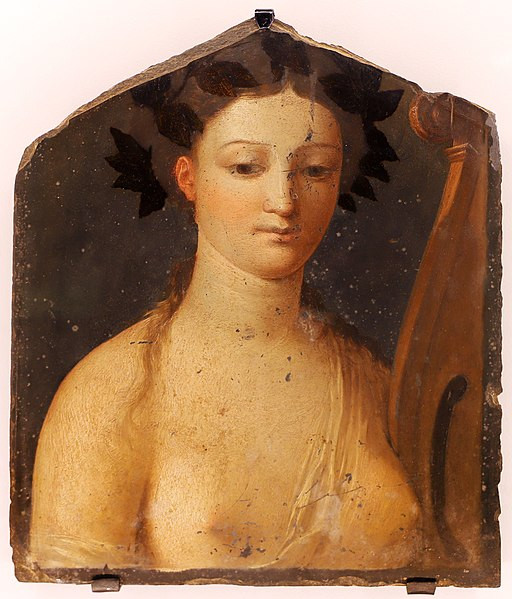
Musa Polimnia (Image source licensed by Creative Commons, author Sailko)
Contrary to what the guide says, there is no original in Herculaneum. The film’s purportedly factual history of Musa Polimnia problematizes the original/copy relation on many levels and in so doing fleshes out the concept of the simulacrum: it turns a real original (Musa Polimnia in Cortona) into a copy (Musa Polimnia in Lucignano) of an invented original (Musa Polimnia in Herculaneum); it glosses the copy in Lucignano by reference to Michelangelo’s Gioconda, thereby casting it as a copy of another original (“it’s our Gioconda della Toscana”); it elides the fact that Cortona houses the real original; it presents Herculaneum, an ancient city with an Etruscan past, as the location of an invented original; it claims that Lucignano houses the copy; and it turns the copy in Lucignano into an original for reasons of political expediency. Musa Polimnia of Lucignano is the simulacrum par excellence, a phantasm that dissembles a similitude or resemblance to a putative original, ushering in a “creative chaos,” a dizzying web of relations between invented originals and copies-posing-as-originals that mocks Plato’s hierarchical derivation of straightforward copies from straightforward originals.
The title of Miller’s book, Certified Copy, a copy, as it were, of “Original Copy,” also illustrates the simulacrum. It is one of two titles Miller considered, the alternative being Forget the Original, Just Get a Good Copy. It is unclear which title came first and which second, but that hardly matters because they are taken to be interchangeable. Yet the two titles seem to tell a different story about the original/copy relation. Certified Copy illustrates Miller’s view that “the copy itself has worth in that it leads us to the original and, in this way, certifies its value.” This title seems to legitimize Plato’s distinction between original and copy: the copy is derivative and its worth assessed by its ability to reflect the model. Forget the Original, Just Get a Good Copy, however, does away with the original and emphasizes a good copy. What might “good copy” mean here? Good by what standards? What would be a bad copy? How can we tell the difference between the two if we have forgotten the original? Miller’s two titles invite a reconceptualization of the original/copy relation along the lines of the simulacrum. For “certified” copy to be equivalent to “good” copy in the absence of the original, its original cannot be what determines its iconic resemblance to it. Rather, value, a word present in Miller’s description of “Certified Copy” and a plausible measure of a “good copy” must replace iconicity. On this reading, a Certified Copy is like a good copy sans original in the sense that both are valuable simulacra, false/non iconic copies of (the forgotten original of) coupledom that make life valuable—beautiful, say, or pleasurable. The film’s title, Certified Copy, alludes to the simulacrum by questioning the order of priority of original and copy. Is the film a copy of the book (likely but uncertain) or is the book a copy of the film (perhaps the book is a copy of the screenplay, was written while the film was being made, and appeared as a finished product in the opening of the film)?
The narrative form of the relationship shows the work of the simulacrum writ large. The two leads meet in the underground and dimly lit antique shop owned by Elle, and the camera lingers on Miller from below as he descends the steep stone staircase; they spend a long afternoon moving around either by car or on foot; and they end in an attic hotel room, also dimly lit, and the camera again lingers on Miller, this time from above, as he goes up the stairs to room number 9, where he and Elle ostensibly spent their wedding night. The underground antique shop hosts the beginning of what may or may not be two strangers’ first meeting, and the attic hotel room hosts Elle’s memory of the beginning of what may or may not be the couple’s wedding. The two events form a simulacral loop: they externally resemble one another as beginnings of a real or imagined coupledom and are internally disparate as phantasmatic copies of a questionable original. If they meet for the first time in the antique shop, they cannot have been married; if they are married pretending to meet for the first time in the antique shop, Elle remembers her wedding night with Miller in the hotel room, but Miller does not remember his wedding night with Elle. The architectural setup of the two events both echoes and parodies the hierarchy of Platonic metaphysics. The underground and dark antique shop is like Plato’s cave, populated by the shadows of an epistemologically uncertain event, and the attic hotel room, instead of being the space of illumination, is equally dark and hosts an epistemologically opaque event. 3 Between antique shop and hotel room, the two leads walk along alleyways, corridors, and through arches, and pause in symbolic dead-ends, such as a crypt-like place for weddings, piazzas, a restaurant, and a cafe. All these spatialize the simulacral nature of their relationship. There is no clear sense of direction here, either for the characters or for the viewer, and no appreciable differences between the piazzas or the streets Elle and Miller walk on. 4 It is all like a maze with no exit. 5
In describing how the simulacrum inverts Platonism, Deleuze gives it three features. First, the simulacrum is an image without resemblance, an external semblance of the original from which it putatively derives. Whereas the resemblance of copies to the original is iconic, like the resemblance of a son to his father, the semblance of the simulacrum is like the ruse and trickery of an imposter: though his appearance may reflect the father’s, the relation is purely external and coincidental. The simulacrum simulates the effects of identity and resemblance, but these are external effects (like “optical effects”), divorced from any internal principle. In Certified Copy, the external effects of the simulacrum of coupledom are physical proximity and embrace. 6
These characterize all the film’s couples. The newlyweds hold hands and/or walk side by side holding hands; the middle-aged French couple walk side by side and at one point the man places his hand on the woman’s shoulder; the elderly couple walk next to each other, and the man leans against the woman’s arm; Miller and Elle either sit or walk side by side most of the film. Twice their embrace is explicitly mimetic: the first time, Miller lays his hand on Elle’s shoulder, following the Frenchman’s “fatherly” advice so as to “free himself” from his romantic woes; and the second time, on the steps of the hotel where Miller and Elle seem to have spent their wedding night, Elle rests her head on Miller’s shoulder and smiles. In so doing, she copies the woman of the bronze statue on the fountain who rests her face on the man’s shoulder, a gesture that, as the Frenchman says to his partner, probably repeating Elle’s earlier words to them, made the woman serene because “she gave the impression of having someone to rely on, of not being alone.” In all these cases, coupledom is a simulacrum that produces external and coincidental effects of identity and resemblance to a putative original—the ritualistic gestures of wedding, a formula for easing quibbles, a form of human support in old age, and a sentimental interpretation of the statue of a couple.
The second feature of the simulacrum is that it is constructed on an internal difference, a fundamental internal disparity not derived from any prior identity. To illustrate this feature, Deleuze refers to modernist writers, such as Joyce and Robbe-Grillet, in whom a single narrative is made to tell different stories simultaneously. In Finnegans Wake, for example, a letter makes all the divergent stories of the “chaosmos” communicate at once in a transversal dimension. Painting and sculpture, too, artistic expressions much in evidence in Certified Copy, have their own techniques of internal difference, to which Deleuze refers as follows:
It is not enough to multiply perspectives in order to establish perspectivism. To every perspective or point of view there must correspond an autonomous work with its own self-sufficient sense. … Representation has only a single center, a unique and receding perspective, and consequently a false depth … Movement for its part implies a plurality of centers, a superimposition of perspectives, a tangle of points of view, a coexistence of moments which essentially distort representation: paintings or sculptures are already such “distorters,” forcing us to create movement. (Difference and Repetition 69, 55-56)
Here perspectivism is conceived as antithetical to representation insofar as it creates multiple convergent or crisscrossing points of view, dislodging the single point of view required by representation. Multiple perspectives generate autonomous worlds of meaning and force us, viewers of the artistic work, to move among them, instead of entertaining the single and fixed perspective of representational art. Perspectivism allows us to see that the internal disparity of the simulacrum permits, indeed requires, that the meaning of a single work of art be multiple, each the product of the different point of view adopted by its characters and/or viewers.
Certified Copy illustrates perspectival multiplicity both visually and thematically. Lucignano is a palimpsest of places. Kiarostami chose the village for its “charm and its small size […] so as to prevent anybody—from himself to the viewer—from getting lost,” adding that any of the film spectators would easily recognize Lucignano, if they had been to Tuscany (“Making of Copie conforme”). Yet the director of cinematography, Luca Bigazzi, said that “No single place was shot in its real setting. Each filmed location is oddly made up of several places. Even one room on the screen can be made up of three different ones” (“Making of Copie conforme”).
Elle’s car ride with Miller brings together a multitude of perspectives. At first, she describes it as a “meandering around with no goal,” but then decides to take him to “a place that he will find interesting.” 7 The shift in direction is accompanied by a shift in the viewers’ perspective first from outside the windshield through the car to the rear window with partial views of the city and the landscape that the car leaves behind, and then to medium closeups of the leads and views of the road ahead from inside the windshield. This perspectival bifurcation presents the ride as movement from a fragmentary origin to an aimless meandering to a specific destination and thus serves as the visual analogue of the film’s movement from the first “fragmentary” shot of the lecture table with Miller’s book but no Miller to the leads’ aimless strolling and chatting to Miller’s exiting the film ostensibly for the purpose of catching the nine o’clock train back. 8 If we add the visual perspectives offered by the superimposed reflections of buildings and trees on the windshield as the car moves along, we get a “coexistence of moments” that problematize direct representation.
Perspectival multiplication is also achieved by means of interruption, a narrative device that layers different points of view. Think, for example, of Elle’s son in the lecture hall where he is simultaneously listening to Miller, playing a video game, and gesturing to his mother, while at the bistro he is at once playing a video game and talking to his mother. Or consider Elle’s responding to various pedestrians as she is driving and talking to Miller. Think also of the phone calls that Elle and Miller receive and answer while strolling in Lucignano. By diverting the characters’ attention away from the main task at hand, these interruptions create autonomous and private or semi-private worlds of meaning which rupture the linear storyline and enhance Elle’s range of affective expression (Miller’s, on the other hand, remains Britishly muted).
Miller and Elle each cling to their view of the value of originals and copies, and these views weave the richly layered tapestry of the film. Elle, whose namelessness suggests either an original’s resistance to becoming a copy via naming or Womanhood credited as Elle by way of reference-convenience, values originals more than copies, wants to recover the lost or mislaid original of her marriage, believes in stereotypical roles for husbands and wives, and claims that things have remained the same in the fifteen years of her marriage: husbands work too much and neglect their wives, her husband/Miller is absent, Miller in the hotel is the same as he was when they got married, etc. The same faith in the superiority of the original emerges when Miller reminds Elle that when she and her son looked at the statue of David in Piazza della Signoria five years prior, she failed to tell him that it was a copy of the original housed in the Accademia; and when in the bistro her precocious son asks, with a sly smile on his face, why she did not give Miller his (the son’s) surname to use in signing his copy, she gets upset and leaves the table. These are cases of intentional omission or pretense, in which Elle willfully leaves out the original (the statue, the father) so that the copy (the replica statue, the son) may be taken as the original. 9 Although avowedly a Platonist who believes in fixed social verities, disdains the degraded copy of her marriage, and wishes to recover the happy original, Elle effectively allows copies to pass as originals. Her stance whereby the original is prized over the copy but the copy is made to pose as the original suggests the simulacrum’s denial of the original/copy hierarchy by posing as both original and copy at the same time.
Miller is Elle’s opposite, a man who prizes copies over originals since, as he says, in art “there are no immutable truths to fall back on.” In his lecture, he offers the popular definition of an original as “authentic, genuine, reliable, lasting, possessing an intrinsic value,” but he seems to be a copy of sorts himself, even a blurry one: he bears a common Anglo-Saxon surname and poses as a kind of impostor—he is “not an expert, not an art historian, not recognized in the field, and not a member of the artistic establishment.” The string of negatives underscores his outsider status, the system’s inability to label him in any way. 10 When he and Elle sit by the statue at the fountain, he calls Elle “sentimental,” and she calls him “irresponsible,” which may be another word for “unreliable,” the opposite of one of his definitions of an original. Miller values perspectives. “It’s not the object that matters,” he says, “it’s your perception of it,” as, for example, the way Marie, Elle’s sister, looks at her husband changes his value. When Elle says that people need to know that the original of Musa Polimnia is in Herculaneum, he protests:
But why? What difference does it make? The original is only a reproduction of the beauty of the girl in the picture, she is the real original. If you look at it like that, even the Mona Lisa is a reproduction of La Gioconda. And that smile—do you think that’s original, or do you think that Leonardo just asked her to smile like that?
Once we know that the original of Musa Polimnia in Herculaneum is a Kiarostami invention, Miller’s question, “What difference does it make?” is perfectly pitched. But within the fiction of the film, his protestation sounds both Platonic and anti-Platonic. To the extent that it posits the ontological dependence of the original painting on its human model, it reminds us of Plato’s critique of the mimetic arts in Republic 10. A painter who paints a bed does not paint a real bed. Rather, he has seen a bed made by a craftsman and reproduced it in his painting. But crucially for Plato, not even a bed upon which people sleep is a real bed. The truly real bed is the Form of Bed. Only the Forms are real, the material bed is a copy of the Form of Bed, and the painting is a copy of a copy. Although Plato did not posit Forms of human particulars, his metaphysical dualism would hardly allow him to take people as real, and so not even La Gioconda would be real for him. All we have here is a series of copies even for Miller, if we bear in mind his suggestion that Mona Lisa’s smile, her most unique feature, may not copy the real expression of La Gioconda at the time of her posing for Leonardo, but a fake smile assumed at his behest. If Mona Lisa’s smile is fake, the original/copy distinction on which Miller’s prizing of the copy rests is dismantled, and the simulacrum creeps in, asserting an internal disparity not derived from any prior identity since none can be shown to exist.
The last feature of the simulacrum is that it appears only as a problem, a question, and a provocation. By leveling the hierarchy of original and copy, it removes any privileged point of view as the truthful one and replaces it with external semblance and internal dissemblance. As a simulacrum, the false copy can no longer be said to be false in relation to a supposedly true model; rather, the “power of the false” assumes a positive value and, as Deleuze says, art is the human expression that affirms and raises falsity to a higher power:
The activity of life is like a power of falsehood: duping, dissimulating, dazzling, and seducing. But, in order to be brought into effect, this power of the false must be selected, redoubled or repeated, and thus elevated to a higher power … It is art that invents the lies that elevate the false to this higher affirmative power, that turns the will to deceive into something that is affirmed in the power of the false. Appearance, for the artist, no longer signifies the negation of the real in this world, but this kind of selection, this correction, this redoubling, this affirmation. The truth perhaps takes on a new signification. Truth is appearance. (Difference and Repetition 96)
In the epigraph to this article, Kiarostami echoes Deleuze’s belief that art transforms lies into truth. Filmmakers string a series of lies together in order to produce a truth that affirms and elevates the power of falsehood. Truth is here obtained, not by means of verification of a copy against an original, but through the dissimulation of the simulacrum in the absence of both originals and copies. The maddening playfulness of Certified Copy performs and celebrates truth-in-appearance. Our inability to ascertain whether Miller and Elle are a married couple playing at meeting for the first time or a couple meeting for the first time and playing at being married suggests the simulacral nature of coupledom in this film. Truth is as and what it appears to be, a play of external semblances, which offer the illusion of epistemic certainty, and of internal differences, which expose the ruse of coupledom. That coupledom is simulacral need not be a cynical realization, but simply a reflection of a natural law, as Miller describes it to Elle:
Miller: The only thing that will keep their marriage alive is care and awareness.
Elle: Awareness of what?
Miller: That things change. Everything changes, and promises won’t stop that. You don’t expect a tree to promise to keep its blossom after spring is over because blossom turns to fruit. And then—then the tree loses its fruit.
Elle: And then?
Miller: And then … the Garden of Leaflessness.
Elle: Garden of Leaflessness?
Miller: It’s a Persian poem. “The Garden of Leaflessness. Who dares say that it isn’t beautiful?”
Here change is turned into a Heraclitean first principle and applied to nature. Leaves turn into blossom, blossom into fruit, and lost fruit into the Garden of Leaflessness. Miller seeks to substantiate a cosmic law by sequential reference to nature and poetry, as if these two have the same evidentiary power but, of course, they do not. When fruit falls, nature temporarily “dies” but a garden of leaflessness remains, that is an objective fact. But “The Garden of Leaflessness” is a Persian poem, and the referent of the pronoun “it” in “Who dares say that it isn’t beautiful” is ambiguous: it might be that the poem “Garden of Leaflessness” is beautiful (reflexive use of “it”) or that a/any garden of leaflessness is beautiful (indefinite use of “it”). The former reading produces a non-sequitur, but it is encouraged by use of the capital letters “G” and “L” in the English caption. The more plausible latter reading is subjective because it fails to convince at least one person, Elle. The simulacrum raises its head again. Nature and poem are made to share an external resemblance (they illustrate change) while also harboring an internal difference (natural change is a ubiquitous fact, but the poem is Persian and speaks either of a contextually irrelevant or of an objectionable beauty).
Formally, visually, and thematically, Certified Copy is a brilliant rendition of the Deleuzian simulacrum, a seamless world of copies without originals and of copies of invented originals. Kiarostami orchestrates a labyrinthine game of perspectives and offers no yarn with which to securely navigate or exit it. The film thematizes and induces in the viewer a feeling of claustrophobia, as the two protagonists are helplessly caught in their solipsistic world of who they are for each other, what they are for each other, and if they are for each other. Cinematic reflexivity here is raised to the second power, the power of the simulacrum, which levels our ability to derive iconic copies from originals or affirm any order of priority. Certified Copy simply asks us to revel in the maddening proliferation of its simulacral places, pieces of art, ideas, and social roles, telling us, along with Miller, that that is what art and life are all about.
Notes
- See Donato Totaro “Certified Copy, or ‘Mirroring Life, Mirroring Art,’” Offscreen 18.9 (2014). For other studies of the film which pay attention to reflexivity see Maryse Bray and Agnes Catalayud, “The truth about lies: the relationship between fiction and reality in Abbas Kiarostami’s Certified Copy,” New Readings 11 (2011): 84-99; and Rex Butler, “Abbas Kiarostami: the shock of the real,” Angelaki 17.4: 61-76. ↩
- For a lucid presentation of Deleuze’s text, to which I am indebted, see Daniel W. Smith, “The concept of the simulacrum: Deleuze and the overturning of Platonism,” Continental Philosophy Review 28.1-2 (2006): 89-123. ↩
- Even the sounds of the hotel room, the church bells tolling outside the bathroom window at the very end of the film, are ambiguous in that they may either foretell the couple’s marriage or mock their failure to begin or renew it. ↩
- In fact, the crypt-like wedding place looks like Elle’s antique shop. ↩
- For the figure of the labyrinth as encoded in the film see Bray and Calatayud note 1 above. ↩
- The woman in the bar assumes that Elle and Miller are married on the basis of their physical proximity and intimate conversation. Later, Elle and Miller enter the wedding-crypt together, Elle moves toward the couple, and Miller sits on a bench outside. Elle tells the newlyweds that she and Miller got married there fifteen years prior and have been very happy together, and the newlyweds want Miller and Elle to feature on a photograph with them by the Tree of Life. ↩
- Car rides are a recurring feature in most of Kiarostami’s major films (most notably in Life and Nothing More, Taste of Cherry, The Wind Will Carry Us, and Ten). ↩
- The end of the film mirrors the beginning: the absent Miller is now the only character in the frame, and his entering the lecture hall is now mirrored by his exiting the frame (and the film). ↩
- Miller references the etymological association of the word “origin” with “birth” via the Latin “oriri”: “arising,” “being born.” In the son’s case, the erasure of the father as the original may simply mean that he is unknown, irresponsible, or otherwise absent. ↩
- Just as Elle is enigmatic in her nameless womanhood, posing as a pure original, so Miller is mysterious in his social identity, posing as an uncategorizable art-writer. ↩



